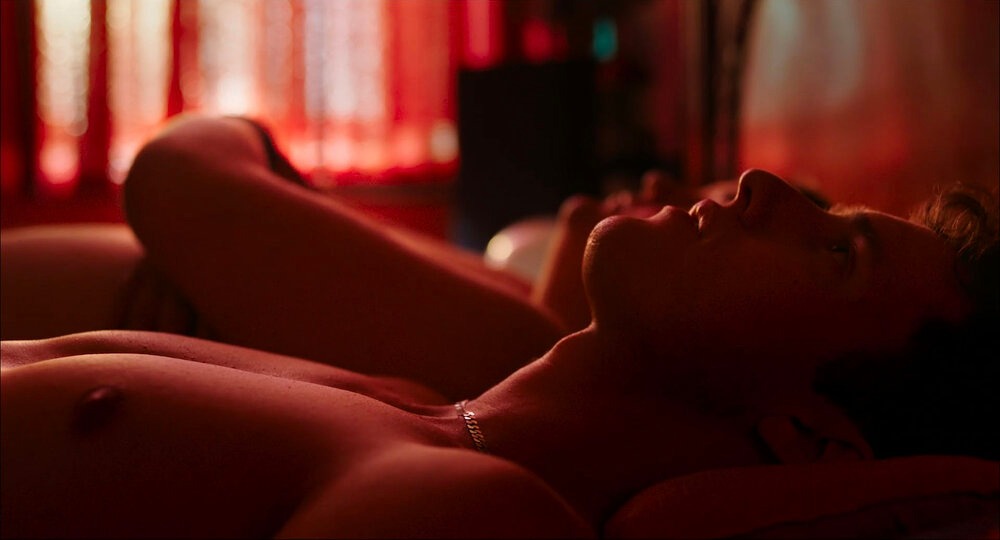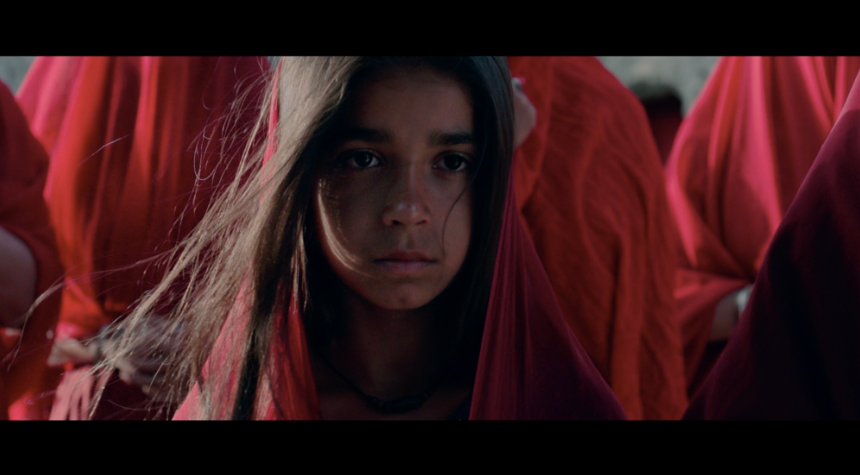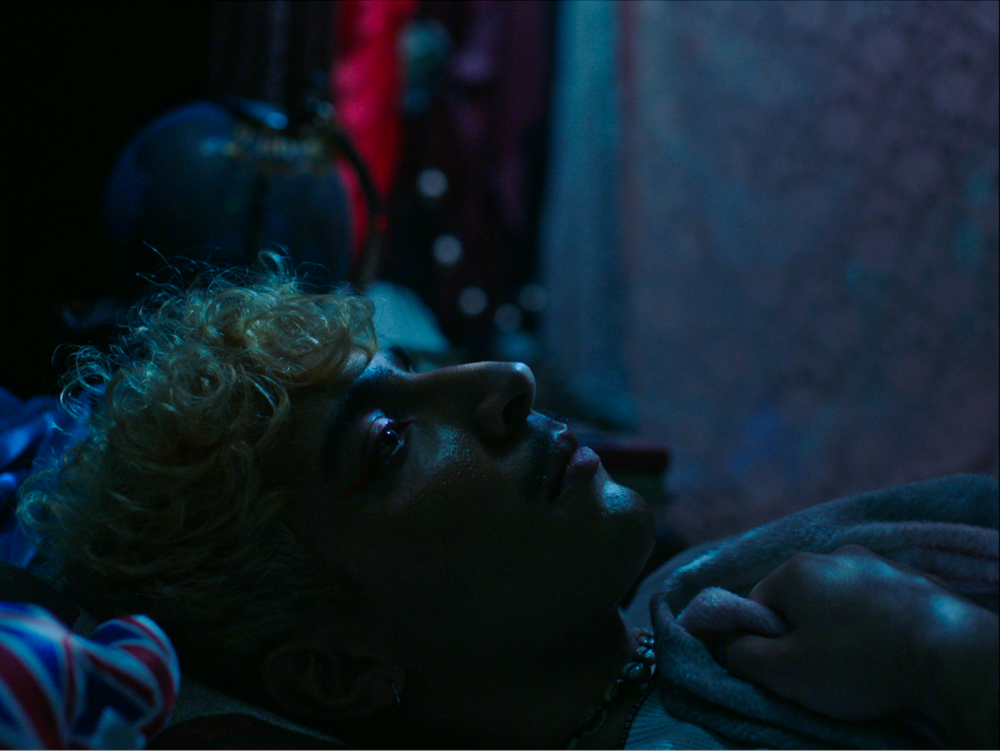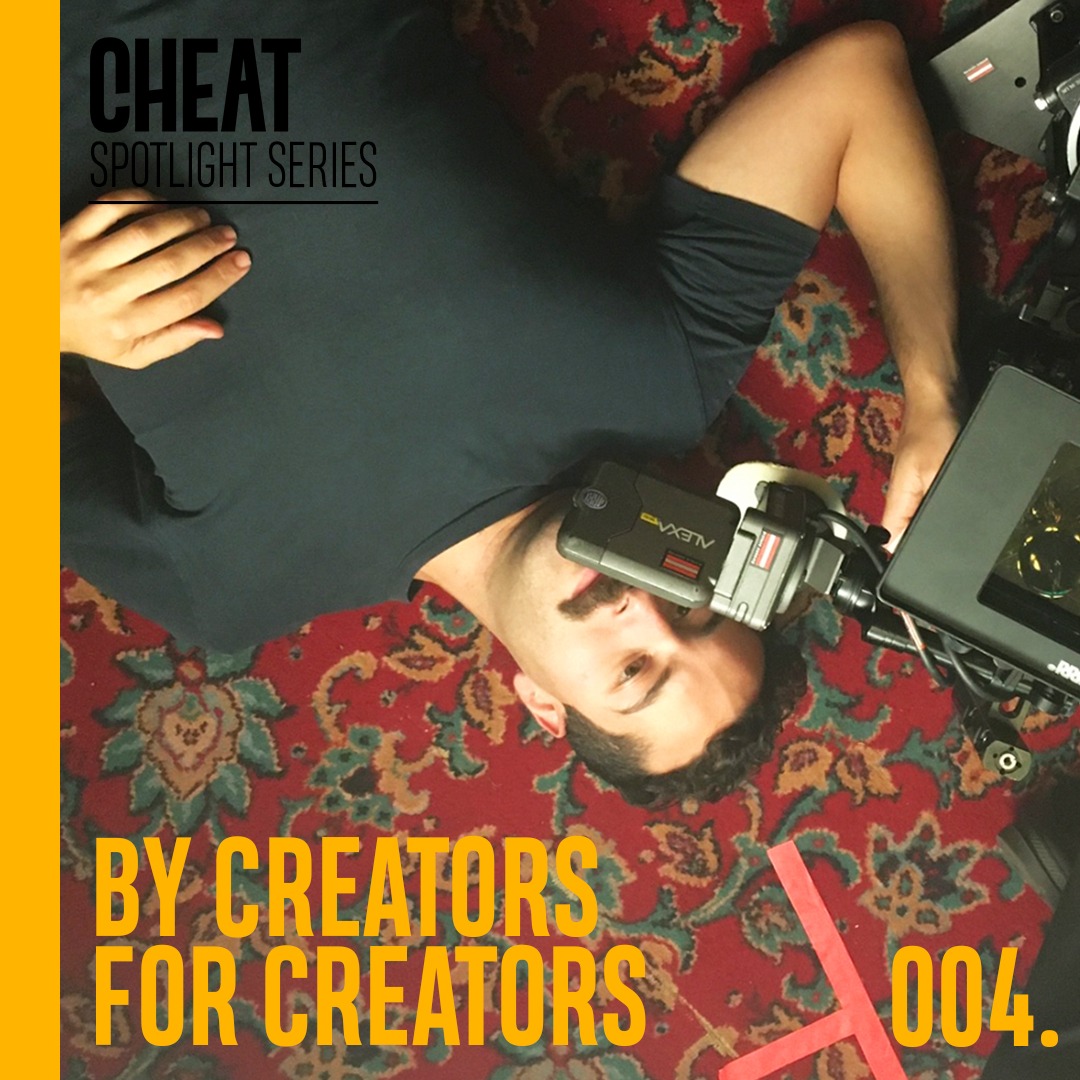BY CREATORS, FOR CREATORS.
Ours is a community where passion and diversity are nurtured and celebrated, which is why we’re using our platform to highlight under-represented creators from all over the industry - from Colourists, DoPs and Directors to Producers, Editors, Sound Designers and anyone/everyone in between. We want to champion those who shy away from the spotlight, those who aren’t yet in the spotlight, and those who statistically have less chance of ever getting to be in the spotlight at all!
Each month, we’ll be publishing an interview with a talented creator from somewhere in the industry, nominated by the person before. They’ll be sharing their work, their ideas and, hopefully, a bit of themselves!
004: Michael Filocamo
Cinematographer
He/They
Michael Filocamo is an Australian cinematographer based in London. He studied at the Sydney College of the Arts where he focused on exploring ideas of gender through video installation and performance. After graduating, he joined queer art collective H.A.R.D, where he continued to create work alongside camera assisting for film and tv. He began his career working on films such as Alien: Covenant (2017) and Gods of Egypt (2016).
In 2017 Michael moved to the UK to study on the Cinematography Masters program at the National Film and Television School, funded by a grant from the Ian Potter Cultural Trust.
Graduating in 2019, Michael’s graduate fiction project ‘Azaar’ went on to be nominated for British Short at the 2020 BAFTA Awards, and win a Postgraduate Craft award for Cinematography at the Royal Television Society Awards. His films have screened at prestigious festivals across the globe.
We discuss the affect of film censorship as a child, defying expectations, the importance of understanding storytelling principals, and how Michael’s interest in gender and sexuality has continued into his career as a cinematographer.
Cheat: Let’s start by addressing one of the reasons Sam nominated you, which was “Michael’s determined to change the world on and off screen.” Could you tell us a bit more about this- what do you have planned, and what kind of change would you like to see?
MF: I came up in the camera department as an assistant in Australia. Being queer I didn’t meet anyone like me for ages in camera crews. I’m constantly shocked by how non-visible queer people are in the camera department, and even on set generally. I constantly have film producers and directors calling me asking if I know a queer person who does this role or that role. I was particularly struck by what was happening in Poland, where they were declaring LGBT-free zones. There’s a big cinematography festival there and I was shocked no one was talking about what was happening within the context of the festival.
At the moment I’m starting a database of LGBTQI+ identifying crew. We’re currently trying to get it off the ground and improve visibility that way. I’m also part of other organisations that do diversity work, improving diversity for women and ethnic minorities. It’s important that we have people behind the camera physically - not just writers, producers and directors - who are from diverse groups.
Cheat: With your visual art, quite a few of the pieces have explored gender and society’s idea of gender. What is it that draws you to this?
MF: I went to an all-boys Catholic school, then to art school after that. I always felt too queer for Catholic school and not queer enough for art school, so I was caught in the middle. It made me think about my relationship to masculinity and femininity and how I relate to those things. It came out of how people perceive you based on how you perform gender and my experience of how context affects that.
Cheat: How does it influence and affect your work as a cinematographer? How do you use your craft to communicate these ideas?
MF: If anything that is part of the reason why I’m able to be freer with my choices creatively. Coming from art school I always feel like everything is up for grabs. Nothing is set for me. I get annoyed when people say you shouldn’t do this or you shouldn’t do that. Who wrote that rule? Who decided that? You can get stuck in thinking and doing things one way. I’m so not interested in that. Every project I approach from baseline - What kind of project is this? What tool am I going to employ? I have my tastes, things I like and don’t like but I don’t rule anything out. If something works, it works, and that definitely comes from my experience at art school and of gender.

[Above: Still from Dwarf Planet, directed by Adrian Chiarella]
Cheat: What kind of films did you grow up watching? Is there one (or two) in particular that really stood out and felt important, or that played a part in your decision to go into cinematography?
MF: My grandparents are all Italian immigrants that immigrated to Australia. They were working class. My parents were brought up in a world more similar to a 1920s Italian village than 70s Sydney. I had a pretty conservative upbringing in some ways. So my family are into Braveheart and Raiders of the Lost Ark. I never saw the end of Braveheart until I was a teenager because my mum and Auntie would record films off the TV and edit out the violence or the sex scenes. So for ages I didn’t know there was that scene in Raiders of the Lost Ark where he drinks from the chalice and melts. I think I was 21 when I saw that film with friends and was like “what? I don’t remember this.” Because of that I really got into horror films as I got older. I bought a little hand-held TV with my weekend job money and that’s how I saw Scream and Interview With The Vampire for the first time. I actually watched the original Halloween recently and was shocked by how much it’s influenced my style. How it influences me now, it definitely feeds in from art. I don’t know what came first, art or film. Films introduced me to art and then art introduced me to ideas and philosophy and back to film.
I really loved Bill Henson’s photography. He was and is a big influence on me. Bill Viola, Rothco, Andy Warhol, Tracey Moffet, etc. I became a cinematographer almost by mistake, I’d always loved film but not coming from a creative family I hadn’t considered it as a possible career. At art school I was shooting video art for friends, then it was my friends in the queer community who said “you can do this as a job” so I ended up at AFTRS doing a camera assisting course. That’s how I first learned to shoot properly.
I went to the NFTS and that was an amazing experience. I was lucky as I had the textbook film school experience. I met some amazing collaborators who are some of my best friends now and we got to make some films together that I’m super proud of and that I still go back to. Shooting them was so much fun. I was really lucky in that respect. I got something out of that that was invaluable. I moved to the UK and knew no one in the industry at all. The NFTS really pushed me out into the industry and it really was my way in.
Cheat: Which projects are you most proud to have lensed, and why?
MF: I have been so lucky to work on projects about many different minority groups, its taken me to places like Bangladesh, Kosovo, India, and bring stories from there to the screen that haven’t been told yet - about queer people, about women, about people of colour, all the intersections of that. I’m proud to have done so many of those kinds of projects and been invited into those worlds by amazing directors. That’s also what I look for when I’m deciding on projects. As DPs we create the images in a culture that’s totally image-obsessed. So it’s important to me that the images I create don’t add to people’s oppression, and I try to be mindful of that.
Cheat: When you talk about shooting all over the world, I think of your film ‘Azaar’. How do you best prepare for a shoot like that? What are the challenges?
MF: I really enjoyed that shoot. We actually shot in Spain! Having come up as a camera assistant in Australia, budgets there are so small and resources so limited, so I learned to shoot DIY. Learning how to use natural light. Minimal kit. Again, in art school I would build my own lights. One of my friends there was quite into tech so we built our own LED panels. On ‘Azaar’ all the exterior light is natural but shaped. Me and the director spent a day walking between all the locations and we photographed them at every hour of the day. Then we used those photos to looked at how the light changed throughout the day and chose the time of day we wanted to shoot that location that was best for the story.
Every project I do needs a different kind of prep, but one thing I do a lot is testing. I try and test loads. If I don’t have access to the camera beforehand, I’ll just do it on my SLR. I think testing is invaluable. The last thing you want is to stand on set and say “it’s not working”! Again, it’s more of an art school process. In art school I would just… make, and I love that way of working. You find some stuff just doesn’t work, and that’s how you learn.

[Above: Still from Azaar, written and directed by Myriam Raja]
Cheat: Seeing as we’ve spoken to Sam about short film Baba, and the fact he celebrated the way you “elevated ‘Baba’ infinitely”, would you be able to tell us about how you got involved in that project, where the film was at when you got there, initial conversations, and how you helped shape what it became?
MF: I came in quite late in the day to that project because my friend was supposed to shoot it but they had to pull out. Sam said “I was looking for queer DPs but couldn’t find any” - so that’s a perfect example of what I was talking about earlier! When I came on, they had been trying to shoot during the height of Covid. The script had changed a lot. Originally they were going to shoot in Cyprus. When I came in they said, “we’re shooting in Manchester in November and it has to look like Lybia”! So that was quite a challenge! There are some scenes in that film shot across four or five locations. I think I drew on the documentary work I’d done in similar places. The type of light bulbs you get there. You get a lot of fluorescent and cheaper LED that has colour cast in it, and mercury vapour and sodium vapour. They have a certain colour to them. So, I tried to play with that a little bit. I tried to keep the lighting a bit rougher because I wanted to - especially in “the streets” - bring in stray light. When you’re in places like that there are so many lightbulbs everywhere, and if you’re shooting in the street it’s coming from all directions. The street scene when they leave the sewer, it’s actually a dairy in the countryside. It’s where they bring the cows in to milk them. We built a small section of asphalt with a manhole cut into it and shot that scene where they’re coming out of the sewers, it’s actually just them crawling through this manhole! I helped Sam and Adam stitch the world together in a way that was 3D and had a texture to it. Sam and Adam are incredible young filmmakers. They have such an amazing eye for narrative. And Adam is such a talented actor. On Baba actually - I really want to thank Panavision. They helped us out a lot.

[Above: Still from Baba, directed by Sam Arbor and Adam Ali.]
Cheat: Having spoken to Sam about his early life making films, it sounds quite similar in that he was always learning and doing and creating on-the-fly solutions, so I can imagine he was quite resourceful in making that film as well…
MF: Yeah absolutely. Sam and Adam brought a lot to that. Even though Sam’s young, he’s got so much experience. He’s got such an interesting take on narrative and storytelling. It was a real pleasure working with him and Adam, for sure.
Cheat: What advice would you give someone considering becoming a cinematographer?
MF: It’s always tough to get into. Everyone has their own journey. You kinda can’t compare to other people. One thing that’s helped me a lot is when I’d just finished a job as an assistant I was super burnt out, and booked a flight to Tokyo. I met a guy who asked me how I can be a DP if I don’t know how to tell a story, so I went and learnt how stories were constructed and how people write story, and the whole process. That’s really helped me a lot. When I read a script I can pull it apart in a way. That’s definitely why I connect with directors in a way because I talk about story more than tech stuff. Sam said to me when we were doing Baba, “I’ve never worked with a DP that I talk to like an actor”.
The other thing I would say is - try and have something outside of film. When I was young I wanted to get my career going then I realised I didn’t have a hobby or anything else. I tried to bunch out, and now I volunteer in the queer community and I’m in to baking. When I was at Art School I got a scholarship in Belgium and did lots of travelling then. I think it makes you a better filmmaker. I read a script and think, that reminds me of a time when this thing happened to me. Films made based on other films are never that interesting. It’s about personal experience.
Cheat: What’s next for you?
MF: I’ve got a few long form things in the pipeline at the moment which I can’t say too much about. I’m currently shooting a three part series for a new steaming service, but I shot my first longform project for Netflix in India last year taking over the second block from a DP friend of mine, and that’s about to come out this year…
Cheat: Anything else you’d like to add?
MF: I really want to thank all the crew and people that have worked for me in the last five years. I do a lot of shorts and docs that can be tough for those people so I really appreciate that support!
Arri, Pixi, Green Kit, Panavision. I couldn’t do it without them, and my mentor Bonnie Elliot and Erika Addis who taught me what a T-stop was. The NFTS and the amazing tutors there. It’s such a journey. Everything I’ve done, is also because I’ve been able to do it through the support of all of those people.
Visit Michael’s website here, and follow him on Instagram,here.
Michael’s nomination for next month…
Name: Stella Heath Keir
Occupation: Editor
Why are you nominating them?: Stella is an incredible editor, collaborator, and friend who’s taught me so much about the power of images.



